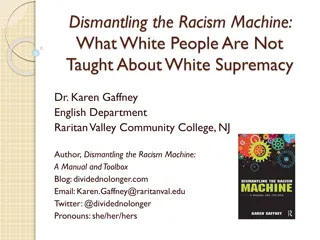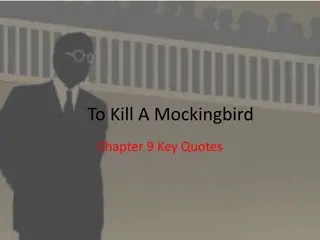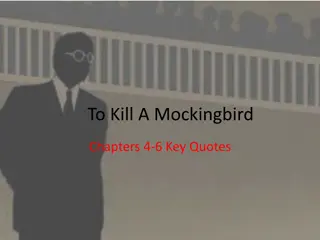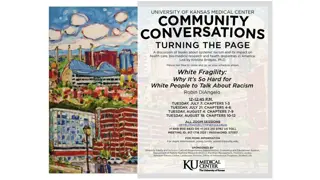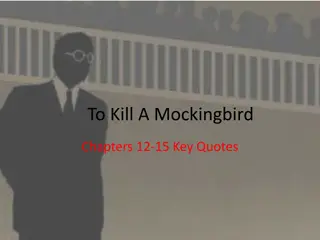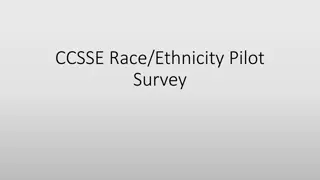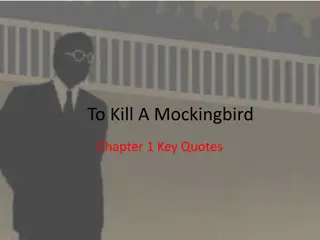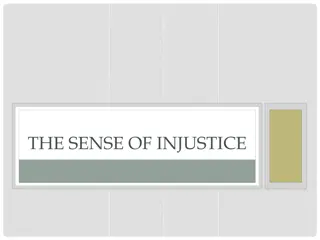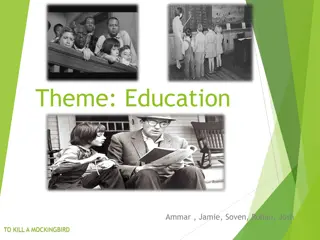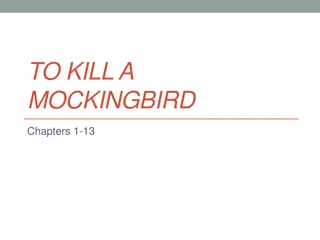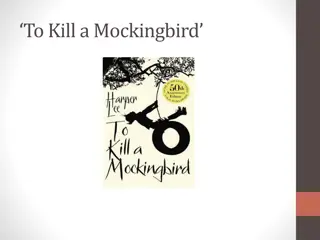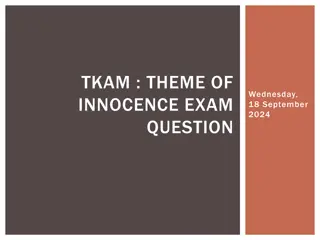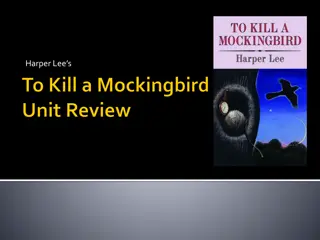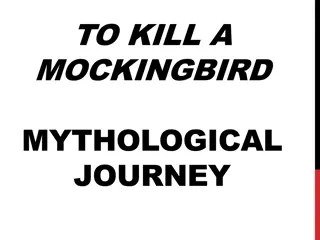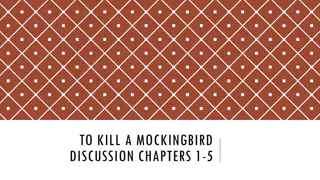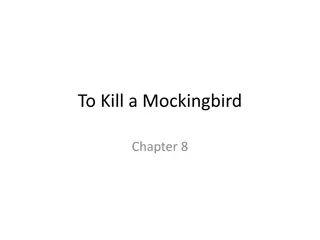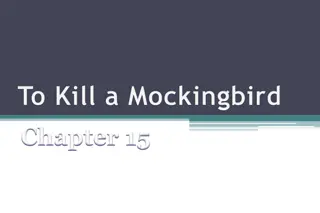Exploring Racism and Injustice in To Kill a Mockingbird
The exploration of deep-rooted racism and social injustices in Harper Lee's novel "To Kill a Mockingbird" reflects the oppressive Jim Crow laws of the American South in the 1920s. Through characters like Scout and Atticus Finch, the narrative delves into themes of discrimination, moral courage, and empathy. The story unfolds with poignant conflicts between white and black communities, challenging readers to confront the harsh realities of prejudice and the importance of standing up against injustice.
Download Presentation

Please find below an Image/Link to download the presentation.
The content on the website is provided AS IS for your information and personal use only. It may not be sold, licensed, or shared on other websites without obtaining consent from the author. Download presentation by click this link. If you encounter any issues during the download, it is possible that the publisher has removed the file from their server.
E N D
Presentation Transcript
To Kill A Mockingbird inquiry project English 10 blk C Eva Lian
Background Jim Crow Law: The segregation and disenfranchisement laws known as "Jim Crow" represented a formal, codified system of racial apartheid that dominated the American South for three quarters of a century beginning in the 1890s. Author: Nelle Harper Lee was born on April 28, 1926, in Monroeville, Alabama. In reality at that time: public facilities for blacks were nearly always inferior to those for whites, when they existed at all. In addition, blacks were systematically denied the right to vote in most of the rural South through the selective application of literacy tests and other racially motivated criteria.
To kill a mockingbird The book is written by the view of Scout, who was 8 years old. It uncomplicated many things that happened in the story since it s the view of a child. The story happened in a small town in South America about 1920s. Scout s family has a great reputation in the whole town, she has a brother called Jem and her dad is a lawyer called Atticus. Atticus was defending a negro called Tom Robinson but Tom was still being judged as guilty, and Tom got 17 shots after the trial on the way to the jail. Theme: the decision making between right or wrong and how to standing in someone else s position to look at things
Characters Scout (Jean Louise Finch): brave, simple and innocent girl Jem (Jeremy Finch): Scout s brother who is getting more mature during the narration of the book Atticus: A mature and knowledged man who is defending a negro called Tom Robinson. He is a good father, a responsible lawyer and a person with strong sense of justice Ms. Alexandra: A symbol of a stereotyped idea in South America Ms. Dubose: A mean, old morphine addict but brave to challenge herself to die free from addiction. Ms. Maudie: A kind and nice widow who allows Scout and Jem to play in her backyard and stands on the same side with Atticus. Mr. Dolphus Raymond: A white man who loves negroes but forced to pretend to be drunk in order to not let people think he s crazy.
To kill a mockingbird Conflict: white people/black people Right /wrong Person vs society (Atticus in the trial) Symbol: mockingbird: innocent people like Tom Robinson & Boo Radley
Why do we label others based on their color?
In the story Jim Crow Laws: The seat in the court & church The white people sat downstairs and the black people sat in the balcony upstairs. The Negroes, having waited for the white people to go upstairs, began to come in. (p218) They have separate churches between white and black people, for Calpurnia once took Scout and Jem to the church to pray with them. (chpt 12) Why? Because there s still racism in South America.
Connections to other sources Ethnic Notions (1986) This documentary traces the deep-rooted stereotypes which have fueled anti- black prejudice
Life-Long Lover of Literature The book is thick, but it is interesting. It did gave me a feeling that I m reading an actual fascinating novel. It kind of lighted me to remind me how reading novel was like and I decided to read novels again.
Resources Jim Crow Laws. (n.d.). Retrieved December 17, 2017, from http://www.pbs.org/wgbh/americanexperience/features/freedom-riders-jim- crow-laws/ Ethnic Notions (1986). (n.d.). Retrieved December 17, 2017, from http://www.imdb.com/title/tt0091018/


